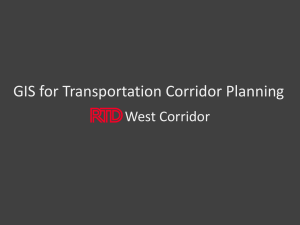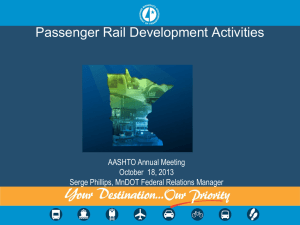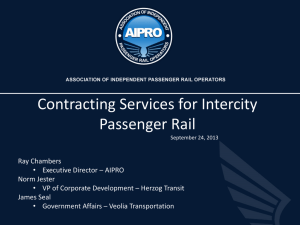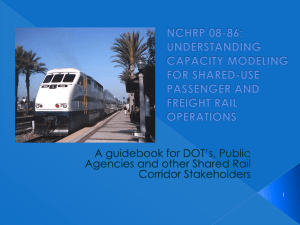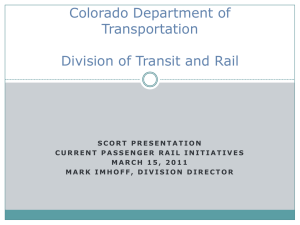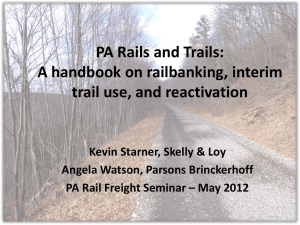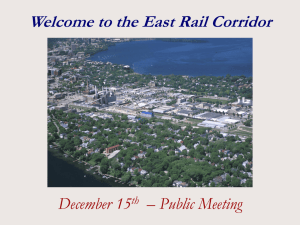ENV-333-Week-4-Assignment-Environmental
advertisement
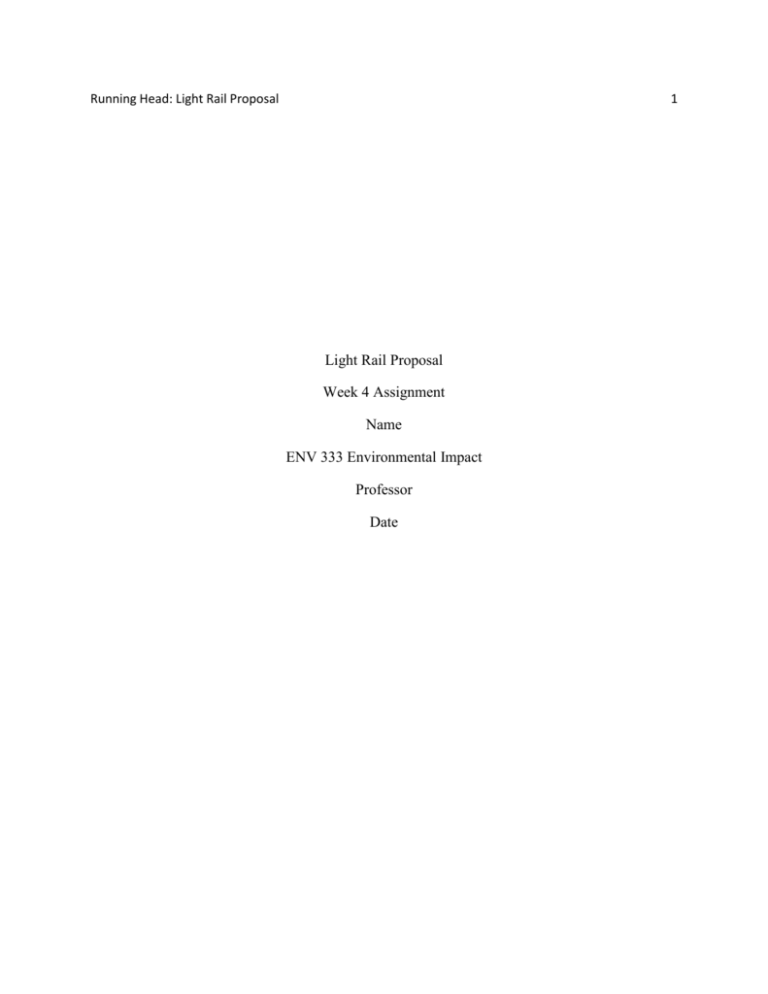
Running Head: Light Rail Proposal 1 Light Rail Proposal Week 4 Assignment Name ENV 333 Environmental Impact Professor Date Running Head: Light Rail Proposal 2 It is no secret that the Houston area continues to sprawl out expanding into many suburbs and other smaller cities around the area. For this very reason, the US 90A/Southwest Rail Corridor Transit Project has been identified in the 2035 Regional Transportation Plan Update of the Houston-Galveston Area Council (H-GAC), and the METRO solutions 2025 plan as a priority transportation investment (Uribe 2011). The US 90A/Southwest Rail corridor continues to increase in population and employment with limited traffic capacity on existing streets and highways resulting in increased travel time, delays, and air pollution. Portions of this area are already densely developed, which means new development and redevelopment occurring along the corridor is expected to generate an increase in travel demand. In particular, high density, mixed use developments are planned in the corridor (Uribe 2011). Over the past few decades, both Fort Bend and Harris County have experienced steady and significant population and employment growth. Future projections indicate that the rate of growth will continue to be high over the next 25-30 years (Uribe 2011). The purpose of the proposed project is to improve mobility, accessibility, and system linkage between the major residential areas in Missouri City and Stafford with major employment centers, such as Downtown and the Texas Medical Center. The proposed transit improvement would provide a high speed transit alternative to the traffic congestion in the corridor and further the implementation of the METRO Rail Expansion program (Metro 2011). Another reason for this project is the fact that the Houston metropolitan area is a severe nonattainment area for the eighthour ground level ozone standard for air quality. This designation requires all transportation projects in the region to conform to a regional transportation plan that reduces auto emissions. Failure to be a part of a conforming plan results in lack of federal funds for that project. Traffic Running Head: Light Rail Proposal 3 congestion degrades air quality by the stop and go action and increases mobile source emissions. Efficient and desirable transit service can help reduce the number of automobiles on the road and improve traffic, helping improve air quality. The overall format of the EIS concerning this project does in fact meet the basic requirements found in the text by Marriot. The main focus in this case is transportation, air quality, energy, public safety, noise, floodplains, and water resources. The reduction in vehicle use and increase in mass transit will help traffic congestion and air quality. In addition, the noise level in said areas will decrease; use of gasoline will decrease; and decrease of vehicles on the road means less accidents. The road construction reduction helps with not contaminating local water resources, as well as less stress on the sewage system and floodplains since there would be no further widening of highways. For example, one connection is southwest Houston, US 59, cannot even by widened anymore since that option has already been exhausted. The scoping process was upheld in this case as there were five alternatives proposed for this project in addition to the No Build Alternative. All five were similar in that they were connecting the same corridor, but were different in connection points once in Houston. The difference was that one was to use the Union Pacific Railroad right-of-way (UPRR), one the highway (Texas Department of Transportation or TxDOT) right-of-way, a newly acquired rightof-way, or a combination of each. However, alignments using the UPRR ROW could have potential impacts in the areas of freight rail operations, noise and vibration, hazardous materials, water quality, floodplains, and aesthetics. Proposed alignments that would use TxDOT ROW of South Main Street could have impacts in the areas of noise and vibration, water quality, traffic, and floodplains. Newly acquired ROW could have potential environmental impacts on a broader Running Head: Light Rail Proposal 4 range of categories such as wetlands, floodplains, parkland, residential and industrial property displacements, noise and vibration, threatened and endangered species, and cultural resources (Uribe 2011). The overall impression of this EIS would be one of exhaustion and time. However, what would be the alternative; an incomplete look at all possible environmental impacts. Although extremely time consuming, the EIS is a necessary document that provides much research and insight into proposed projects. This holds true for most if not all EIS’s, and this fact will not change. The key to “streamlining” the process so to speak is having the right people in the right places to do the research required for each project. This will ensure proper efficiency necessary to achieve timely results (if possible). Without having the right team of people in place, this process will be even more grueling than it already is, and that will not be beneficial to the people or the environment. Running Head: Light Rail Proposal 5 Resources Marriott, Betty B. Environmental Impact Assessment: A Practical Guide (1997). McGraw-Hill, New York, NY. Uribe, B. M. (2011, January 10). Preparation of Environmental Impact Statement for Transit Improvements in the US 90A/Southwest Rail Corridor in Metropolitan Houston, TX. EPA. Retrieved July 28, 2013, from http://www.epa.gov/fedrgstr/ US 90A/SOUTHWEST RAIL CORRIDOR (SWRC). (2011, February 7). METRO Metropolitan Transit Authority of Harris County, Houston, Texas. Retrieved July 30, 2013, from http://ridemetro.org/
